|
More Information...
Publisher: Thomas Astley, London, 1742.
Hard Cover, 336 pages, 5.25 x 8.00.
Item #1762
Here is an original classic mid-18th-Century (1742) brewing volume, the London and Country Brewer, fourth edition, by "a person formerly concerned in a common brewhouse at London." All aspects of malting and brewing as carried out in during the mid-1700s are described. This is one the classic brewing texts of all time.
Chapters:
I. Of the nature of the barley-corn, and of the proper soils and manures for the improvement thereof.
II. Of making good malts.
III.To know good from bad malts.
IV. Of the use of the pale, amber, and brown malts.
V. Of thge nature of several waters, and their use in brewing.
VI. Of grinding malts.
VII. of brewing in general.
VIII. Of the London method of brewing stout, butt-beer, pale and brown ales.
IX. Of the country or private way of brewing.
X. Of the nature and use of the hop.
XI. Of boiling malt liquors, and to brew a quantity of drink in a little room, and with few tubs.
XII. Of foxing or tainting of malt liquors; their prevention and cure.
XIII. Of fermenting and working of Beer and ales, and the unwholesome practice of beating in the yeast, detected.
XIV. Of several artificial lees for feeding, fining, preserving, and relishing malt liquors.
XV. Of several pernicious ingredientsput into malt liquorsto encrease their strength.
XVI. Of the cellar or repository for keeping beers and ales.
XVII. Of sweetening and cleaning casks.
XVIII. Of bunging casks and carrying them to some distance.
XIX. Of the age and strength of malt liquors.
XX. Of the profit and pleasure of private brewing, and the charge of buying malt liquors.
To which is added, a philosophical account of brewing strong October beer.
CONDITION: Cover shows general wear, age-toning and a couple of small stains. Boards are still fully attached, though the hinges are a bit tender. Inside, former owners' names written. Pages age-toned as per expected for a book of this age. All-in-all, one of the cleaner examples we've seen of a book from this early era. Please study pictures below carefully.

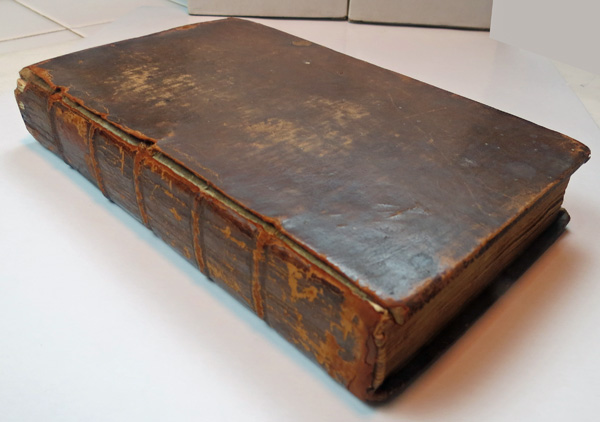
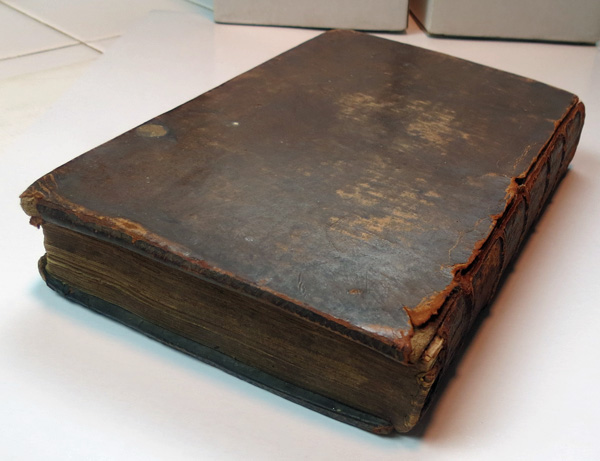
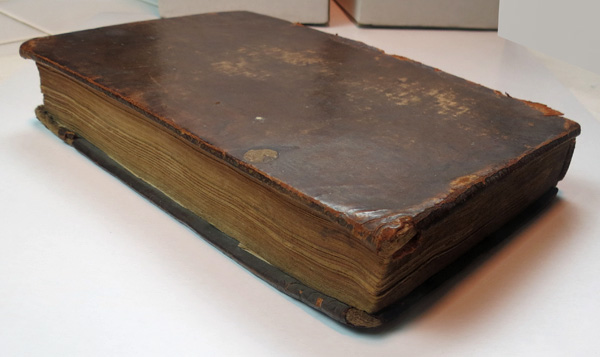
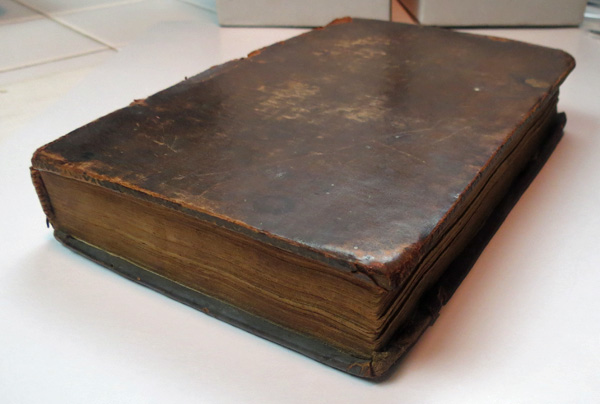

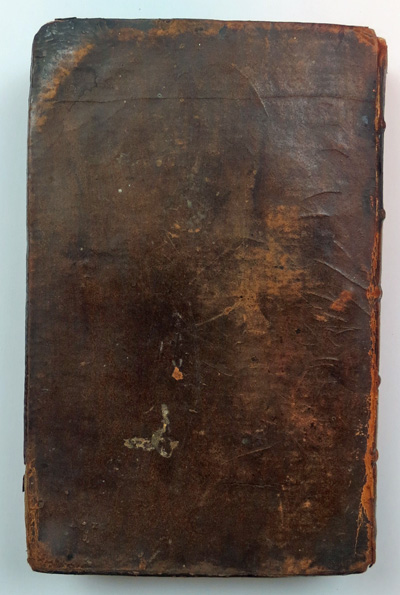
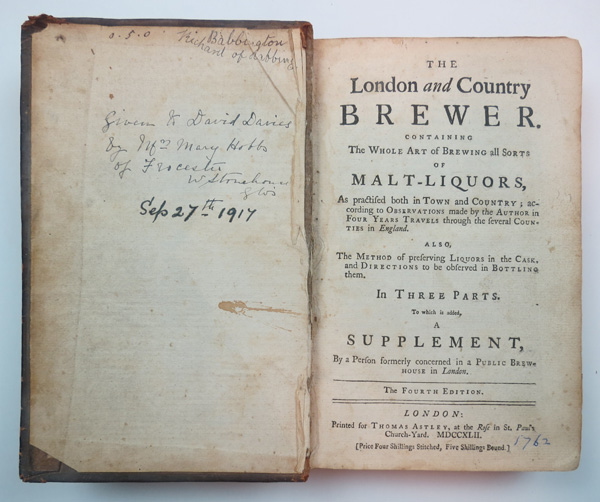
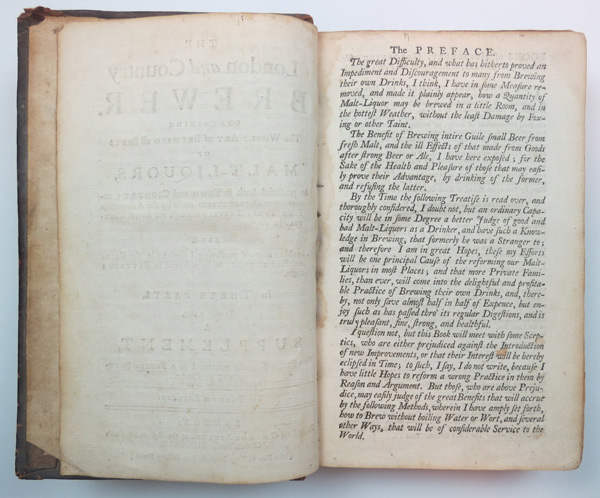
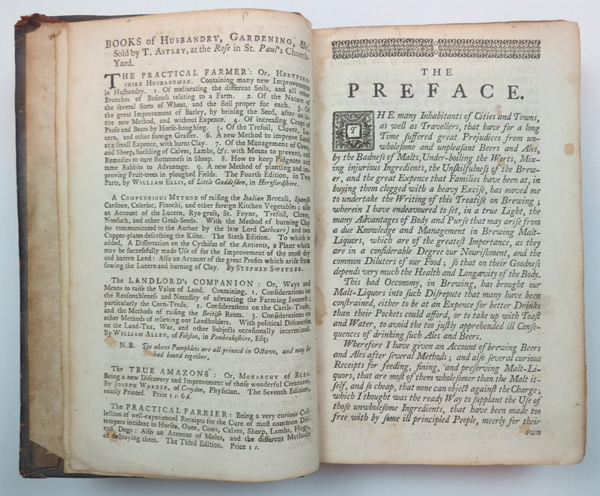
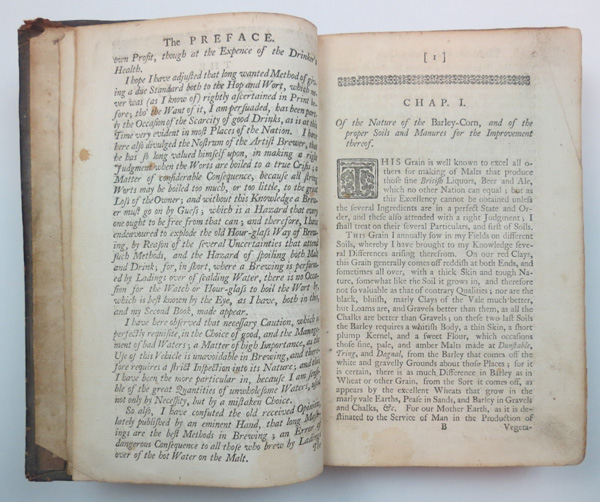
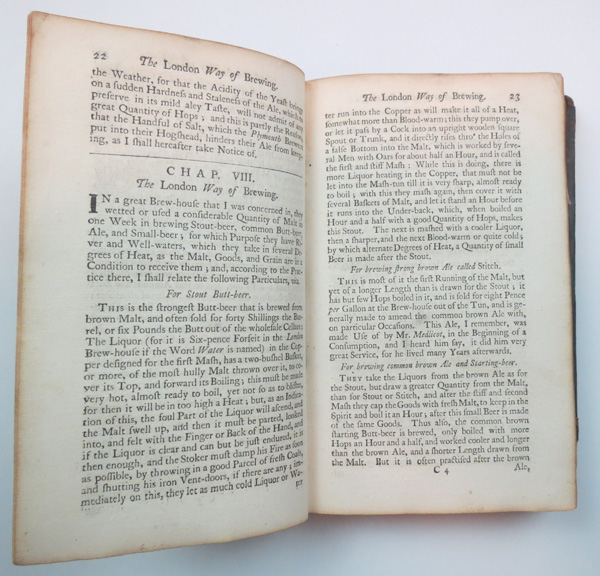
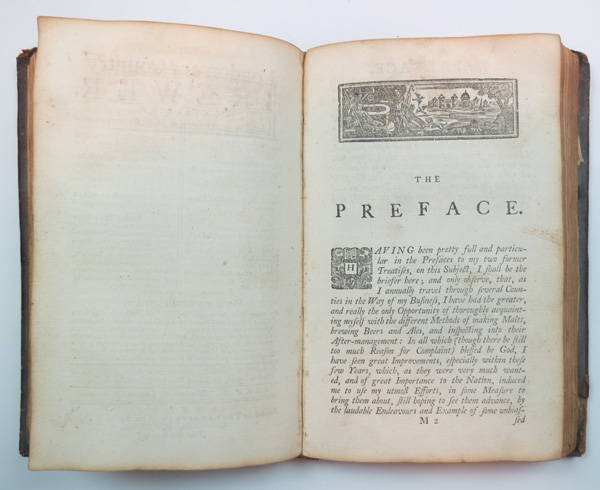
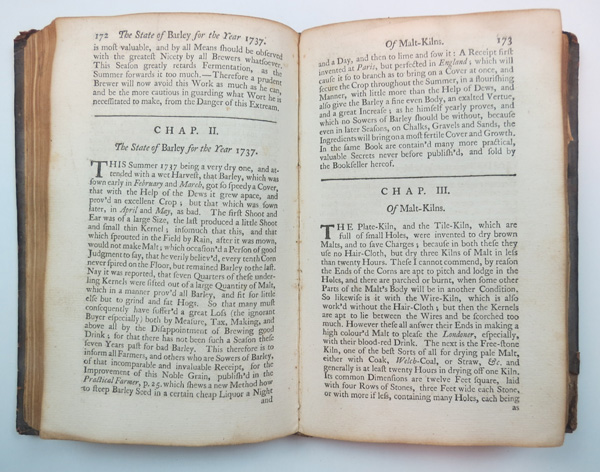
|